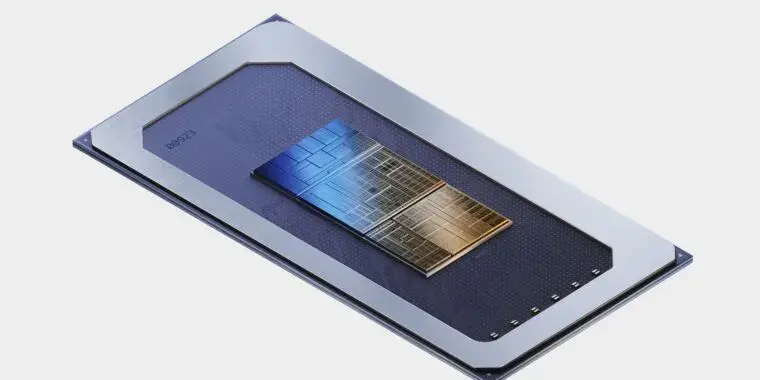lol it’s already out there on tens of millions of laptops, but I guess hubris is the way to go
Bollocks! 64k RAM is enough for anything!
A more recent example:
“Nobody needs more than 4 cores for personal use!”
The problem with ARM laptops is all of the x86 windows software that will never get ARM support and all of the users that will complain about poor performance if an emulator is used to run the x86 software.
Most Linux software already supports ARM natively. I would love to have an ARM laptop as long as it has a decent GPU with good open source drivers. It would need full OpenGL and Vulkan support and not that OpenGL ES crap though.
Windows as always turn out to be the main villain.
Microsoft is actually pushing Windows on ARM right now, since their exclusivity deal with Qualcom expired. This is going to get interesting.
Modern ARM GPUs already support OpenGL and Vulkan, that’s not a problem. Just some platforms chose to go mobile APIs due to running Android.
The trick with emulation that Apple did was to add custom instructions to the CPU that are used by the emulation layer to efficiently run x86_64 code. Nothing is stopping other CPU manufacturers from doing the same, the only issue is that they have to collaborate with the emulation developer.
The driver situation is less than ideal. Mesa got support for Mali but that’s not the only GPU that comes with ARM chips and you get bonkers situations. E.g. with my rk3399-based NanoPC, a couple of years ago (haven’t checked in a while and yes it’s a Mali) rockchip’s blob supported vulkan for android but only gles for linux as rockchip never paid ARM the licensing fees for that.
And honestly ARM is on the way down: Chip producers are antsy about the whole Qualcomm thing and Qualcomm itself is definitely moving away from ARM, as such my bets for the long and even mid-term are firmly on RISC-V. Still lack desktop performance but with mobile players getting into the game laptops aren’t far off.
Doesn’t Microsoft have something similar to Apple’s Rosetta 2 JIT x86 -> ARM code translation kajigger? I could swear I’ve seen something like that mentioned
Edit: not sure whether it was WOW64 that I read about, that seems to only work for running 32 bit intel code on ARM (although I have no idea if that’s actually a problem or not when running modern Windows binaries, the last Windows I ran was Vista)
They have, and in my experience it works nicer than Rosetta.
Windows 10 had it limited to 32bit binaries (but Windows 10 on ARM is generally very broken). Windows 11 can handle both 32 and 64bit emulation.
Yeah I recall it somehow being better designed than Rosetta but I can’t dig up where I read about this
Don’t want to go into too much details - from a high level perspective the Windows version integrates better into the overall system. In Rosetta, once you’re in the emulation layer it can be rather complicated to execute native components from there. In Windows - with some exceptions - that’s not a problem.
This sounds very familiar to when Steve Ballmer wasn’t worried about the iPhone at all.
Or when Kodak didn’t worry about digital cameras
I replaced my old Intel Core i7 HP ProLiant server with an Odroid M1 (ARM Based) and it consumes 2 watts compared to 72 that the Intel Server did.
The only thing I can’t do with it is my Minecraft server, it runs all else perfectly. Even the Lemmy instance of this account is powered by the same server! And what’s more it basically runs for free, as solar generates enough power for the server to consume, even when it’s cloudy.
Yes, I believe Intel should be afraid.
Impressive!
I run my lemmy instance on a pine64 quartz64 which uses an rk3566. It runs really well and power consumption is totally negligible. Didn’t notice any increase in my power bill since it’s been running.
Nice, cool to see more people have an arm Lemmy instance
You can’t do the Minecraft server because of performance right?
that must be the reason seeing as java is available for just about everything these days
modern arm socs are impressive but i seriously doubt that 2 watt chip is beating the 75 watt chip it replaced
Well, Java can call into native code. I’m pretty sure Mojang isn’t doing that sort of thing, but I wasn’t entirely sure they weren’t depending on a subset of the JVM or a native library that is defacto standard in the x86 world.
[This comment has been deleted by an automated system]
I don’t remember Minecraft server edition relyint on native binaries, but it’s been a while since last ran it, maybe Mojang changed it.
Same, and it sounds like it doesn’t… I just wasn’t sure. You can also run into things like “I never realized this was using… glibc… which is on every x86 Linux computer.” I don’t think that’s happened either though.
Programs like Box86 and Box64 csn efficiently make native calls work out if there are native equivalents available, and there’s always qemu-static if that fails.
Interesting, good to know
The server was a second hand server that has 32GB RAM and 2 i7 CPU’s, it was made in 2015 so quite old. The Odroid has only 8GB of RAM but for my purposes that’s enough, and given the power it saves it’s absolutely a bargain!
If I ever need this much memory again I can just temporarily spin up something more powerful, for all other 24/7 tasks I can keep up the efficient ARM server.
it’s great that the new machine suits your needs with so little power. whatever gets the job done with the least energy and cost is almost always the best option.
we are just questioning whether its performance is truly comparable with the old one. because arm cannot replace x86 on performance per watt alone, many applications need more performance regardless of wattage. i think your old machine was overkill for your use case
Yeah makes sense! It probably doesn’t although I have no benchmarks to prove it, it just is enough for me. I know this much though: even if the x86 server had the same specs (ram, GHz) as the arm version it likely still draws more power
Yeah it’s mostly performance related. I have like 10 different websites running all at once, and while CPU and RAM aren’t 100% all the time, with a heavy load I don’t have enough free to do it
I hope Risc-V will make it. Even though idk? But it literally has no weird proprietary shit like ARM and it actually makes sense.
Going away from x86_64 is important, even for the environment
Much like the open source movement before it, the open hardware movement will have a slow crawl to a bare victory.
It’ll first be used a lot by labs, embedded applications and general infrastructure, far away from the consumer space with only a little bit of overlap.
Then, hopefully, some new Apple-like company manages to slam dunk their presentation and introduction to market, effectively disrupting the market - in a good way.
Follow me for more hopeful divining. We’ll have the shaking of sticks, a dead goat boy and symbols written in the floor.
Bring candles.
Whats also awesome is, that SiFives devices run Coreboot out of the box.
I own a Thinkpad T430 and soon a Clevo NV41 and both are also Coreboot compatible. Most excited about the new hardware, even though it will need a fully blobbed Coreboot… SiFive on the other hand is probably fully FOSS?? This is crazy!
Sad news about SiFive lately :/ all but the founding members got cut. We’ll see where that goes…
But yes, RISC-V getting better and more performant is a net gain. I’m thinking that open firmware will be the future battleground of liberation movements.
“Listen, you can’t have open firmware, because manufacturers want to give you secret sauce security, and also authorities need to catch terrorists and pedophiles… see, they are evil and-” sush… let me have my long lasting, open firmware system. I want it, I want it NAO!!
My hopes for RISC V are higher than I like to admit.
I really hope it goes mainstream and gives us ARM benefits with the open nature awesomeness
Well they should be afraid. I want a ARM Linux laptop as well. Or even better RISC-V! Yes plz… THE WORLD NEED RISC-V, Yesterday.
I wish the Pinebook Pro was updated cause I’d give that a shot. Or better, an ARM powered Framework laptop
RISC is good!
I think I remember Intel saying that 64 bit on the desktop was not needed. They are great at making meaningless predictions it seems.
My m1 MacBook Air is hands down the most incredible laptop I’ve ever owned. I’ve had it for 3ish years now and it just doesn’t fucking stop. Battery life is still amazing and runs just as fast as it did day 1.
I’ve NEVER had that experience with any Intel/PC laptop, ever. Honestly I’m never going back.
deleted by creator
that is a big part of the performance, but the battery life savings also come from clever chip design and and the fact that TSMC has been ahead of Intel on feature size for years now.
Intel is in denial.
Denial inside.
They’re of course exaggerating a little and speaking confidently because theyre in the business of selling a product and not in the business of trash talking what they sell or reducing confidence in their product.
That said the M1/M2 silicon battery life gains were a huge leap forward when they first launched but in terms of battery efficiency and power AMD has been nipping at their heels, and in due time intel will likely get it’s stuff together and join them. You can already get ryzen laptops efficient enough and cool running enough that the fan is off during most light usage, and they can get hours into the mid to high teens on some models.
Likewise even macs will start to drain quite a bit when say watching an hd video 1.75x speed, or playing a video game, or encoding something using max CPU power. So while the Macs do have a power per watt advantage, you’ll still need to be plugged in.
And thats BEST arm vs intel and amd as they catch up. Samsung, google, and qualcom dont really have anything like the m2 at play and while qualcom is rumored to be close the samsung fab’d chips definitely arent.
So as things are the death Intel and AMD has been greatly exaggerated and in part due a combination of the usual apple hype combined with that hype being VERY VERY justified this go around.
Likewise even macs will start to drain quite a bit when say watching an hd video 1.75x speed, or playing a video game
That’s not my experience. I can play demanding games (CPU/GPU flat out) for several hours on battery on my Mac, and it only has a 50Wh battery.
With “normal” use I get about 18 hours on a charge.
I generally charge it overnight, like a phone, except I don’t do it every night. I often don’t even have access to a charger for days at a time, a laptop charger isn’t part of my normal travel kit. If I notice the battery “running low” that means I need to find a charger in, like, five hours time.
The high end MacBook Pros, with a 12 core CPU and 38 core GPU… yeah those can draw a lot of power. In fact they even drain the battery while plugged into a charger if you really push them. But I don’t think of those as “proper” laptops. They’re more like a portable desktop.
A demanding game on a macbook air m2 will still draw close to 30 watts and while that is actually still good for a laptop relative to what the output is, and you can probably do things to improve that by tweaking in game settings, it’s still going to suck power out of a 50Whr battery.
Steamdecks also run an efficient ryzen apu that lets them play games for 2-8 hours depending on how things are tweaked. Likewise on my 39Whr ryzen thinkpad(intel got a 59whr battery dont get me started on that nonsense) I can get 8-12 hours depending on usage normal browsing as well.
This isnt to take down the m1 & m2. They are definitively more powerful, theyre definitively more efficient, I’m not disputing that. But the gap isnt as huge as it was when the m1 launched.
I’m on an M1 MacBook Air - Anandtech measured between 11 and 17 watts with an M1 Mac Mini.
However, the Mac Mini has an excessively large cooling system for the chipset it runs (before Apple Silicon, they sold the same Mac with an Intel i7 that turbo boosted to 4.6Ghz).
The MacBook Air has basically no cooling at all and it definitely throttles under high load. It’s still fast enough to get 60fps with good graphics settings while throttled for the games I play - I’d say it’s about on par with my gaming PC that has an entry level Nvidia GPU, but there’s no way it’s drawing as much power as in Anandtech’s testing on an actively cooled chip.
Based on the battery life I’m getting, I’d guess it’s drawing somewhere around 8 watts on average while playing games. It’s a very efficient chip… it draws 0.2 watts while idle according to Anandtech testing. Remember, this family of chips started life on devices with a 10Wh battery and the MacBook Air isn’t much faster than an iPhone.
You are absolutely right about efficiency. Even the (less efficient) M2 is way better than the 6800U for example under single-threaded load. It’s ~5W vs ~15W, around 3 times as power hungry as the M2, while performing slightly worse.
The M1 is around 25% more efficient than the M2.
The M1 is around 25% more efficient than the M2.
No that’s not right. The M2 is far more efficient. Third party tests report he M2 MacBook Air lasts up to 3 hours longer than the M1.
Yes, it draws more power under peak load… but it more than makes up for that with better performance allowing it to return to an idle state more quickly. Give an M1 and an M2 the same task, and the M2 will draw less power to get the task done.
Your original discussion with @lemillionsocks@beehaw.org, was about power usage while gaming, and the corresponding worst-case battery life. I was referring to this as efficiency.
I understand now that the term was misleading The M1 is 25% more frugal than the M2 under worst-case load.
Yeah, I hope so, but they also cannot just lie about the direction they think they are headed like that as a public company. With the kind of progress translation has made it just seems inevitable that the switch will happen for lower power consumer devices at least. (Lower power being relative to a high end workstation) interesting to see if maybe this means a pivot to commercial only products.
It’s possible this is a result of improvements Intel is planning for their x86 chips. They’ve already mirrored the efficiency and performance core designs that AFAIK originated in ARM.
In a way, this might be Intel making a prediction based on how years ago Intel launched an x86 replacement, and AMD launched x86-64 … and AMD won because people didn’t want to rebuild all their software/couldn’t get their software.
yeah but back then it was not 90% web apps. also programming languages are way better supporting both platforms. ARM is far from being a little player anymore
That’s true, but Windows ARM and Linux desktop ARM are still pretty niche.
The web apps thing definitely makes this a lot easier for ARM to takeoff in the PC segment. Though, a lot of those devices are pretty well served by Chromebooks … of which, I think many are already ARM.
Intel planning to abuse its quasi-monopoly to stifle competition and innovation? They wouldn’t dare, would they? /s
Intel is evidently not paying attention.
I wonder if intel is betting on increased centralized cloud computing as the way forward for personal computers. So the efficiency benefits of ARM are irrelevant in their minds since they think the real power will come from big data centers.
🤖 I’m a bot that provides automatic summaries for articles:
Click here to see the summary
But Intel CEO Pat Gelsinger doesn’t seem worried about it yet, as he said on the company’s most recent earnings call (via Seeking Alpha).
“Arm and Windows client alternatives, generally, they’ve been relegated to pretty insignificant roles in the PC business,” said Gelsinger.
Ideally, Arm-based PCs promise performance on par with x86 chips from Intel and AMD, but with dramatically better power efficiency that allows for long-lasting battery life and fanless PC designs.
Qualcomm’s latest Snapdragon chip for PCs, the 8cx Gen 3 (also called the Microsoft SQ3), appears in two consumer Windows devices.
Even if Gelsinger is wrong, he’s trying to spin the rise of Arm PCs as a potentially positive thing, saying that Intel would be happy to manufacture these chips for its competitors.
Right now, TSMC has an effective monopoly on cutting-edge chip manufacturing, making high-end silicon for Qualcomm, Nvidia, AMD, Apple, and (tellingly) Intel itself.
Saved 71% of original text.




















